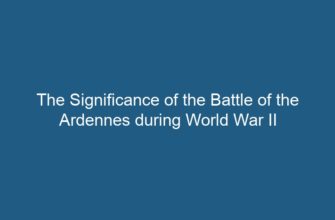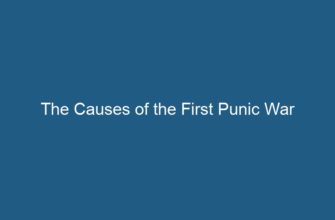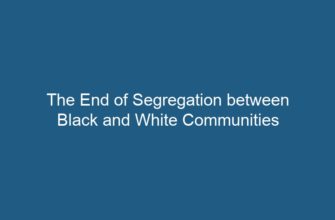The interaction between Native Americans, French colonizers, and British settlers in North America played a significant role in shaping the rivalry between France and Britain. The complex dynamics and relationships that developed between these groups had far-reaching consequences for the colonial powers and the indigenous peoples alike. This article explores the various ways in which Native Americans influenced the French and British rivalry, from military alliances to cultural exchanges and territorial disputes.
- 1. Native American Allies and Military Strategy
- 1.1 French-Native American Alliances
- 1.2 British-Native American Alliances
- 2. Cultural Exchanges and Interactions
- 2.1 French Assimilation of Native American Practices
- 2.2 British Adaptation of Native American Tactics
- The French and Indian War Explained | History
- 1754: The Bloody History Of The French-Indian Wars | History Of Warfare | Timeline
- 3. Territorial Disputes and Native American Involvement
- 3.1 French Territorial Claims and Native American Support
- 3.2 British Territorial Expansion and Native American Resistance
- FAQs
- FAQ 1: How did Native American tribes choose which side to support in the French and British rivalry?
- FAQ 2: Were Native American tribes treated differently by the French and British?
- FAQ 3: Did the Native Americans benefit from their alliances with the French and British?
- FAQ 4: How did Native American cultures influence European settlers in North America?
- FAQ 5: What was the impact of the French and Indian War on Native American tribes?
- FAQ 6: Did the French and British rivalries have a lasting impact on Native American tribes?
- Conclusion
1. Native American Allies and Military Strategy
The Native American tribes played a crucial role in the military strategies employed by both the French and British. By forming alliances with different tribes, the European powers were able to gain strategic advantages in their conflicts.
1.1 French-Native American Alliances
The French established strong alliances with several Native American tribes, such as the Huron, Algonquin, and Abenaki, among others. These alliances provided the French with valuable military support, as well as access to crucial knowledge about the land and resources.
For example, during the French and Indian War (1754-1763), the French relied heavily on their Native American allies to wage guerrilla warfare against the British. Native American warriors, known for their stealth and knowledge of the terrain, proved to be invaluable assets in this type of warfare.
1.2 British-Native American Alliances
The British also sought alliances with Native American tribes, albeit to a lesser extent compared to the French. The Iroquois Confederacy, consisting of the Mohawk, Oneida, Onondaga, Cayuga, Seneca, and Tuscarora tribes, was a key ally of the British.
The British leveraged their alliances with the Iroquois Confederacy during the French and Indian War. The Iroquois provided the British with valuable intelligence and support, effectively countering the French-Native American alliances.
2. Cultural Exchanges and Interactions
The interactions between Native Americans and European settlers led to significant cultural exchanges and the adoption of certain aspects of Native American culture by both the French and British.
2.1 French Assimilation of Native American Practices
The French, particularly the coureurs des bois (French fur traders), developed close relationships with Native American tribes. These relationships often involved intermarriage and adoption of Native American customs, language, and clothing.
The French fur traders adopted Native American hunting and trapping techniques, as well as their knowledge of the wilderness. They also incorporated Native American words and phrases into their own language, creating a unique blend of French and Native American dialects.
2.2 British Adaptation of Native American Tactics
The British, while generally less inclined to assimilate Native American culture, did learn from their tactics. They adopted Native American guerrilla warfare techniques, such as ambushes and hit-and-run attacks, which proved effective in the dense forests of North America.
Furthermore, the British recognized the importance of trade with Native American tribes. They established trading posts and engaged in the fur trade, emulating the French fur traders’ successful interactions with indigenous peoples.
The French and Indian War Explained | History
1754: The Bloody History Of The French-Indian Wars | History Of Warfare | Timeline
3. Territorial Disputes and Native American Involvement
The rivalry between France and Britain in North America often centered around territorial disputes, with Native American tribes caught in the crossfire.
3.1 French Territorial Claims and Native American Support
The French claimed vast territories in North America, including the Mississippi River Valley and parts of present-day Canada and Louisiana. Native American tribes living in these territories often sided with the French against the encroaching British settlers.
Native American tribes, such as the Ottawa and Ojibwe, supported the French in their efforts to maintain control over these territories. They saw the French as less of a threat to their land and way of life compared to the British.
3.2 British Territorial Expansion and Native American Resistance
The British, driven by their desire for territorial expansion, clashed with Native American tribes who fiercely resisted their encroachments.
One notable example is the Pontiac’s Rebellion (1763-1766), led by the Ottawa chief Pontiac. Native American tribes, including the Delaware, Seneca, and Shawnee, united in an attempt to drive the British out of their lands, following the French defeat in the French and Indian War.
FAQs
FAQ 1: How did Native American tribes choose which side to support in the French and British rivalry?
The Native American tribes’ decision to support either the French or British was influenced by a variety of factors. These included historical alliances, trade relationships, perceived threats to their territory and way of life, and cultural affinity. Some tribes had longstanding alliances with either the French or British, while others evaluated the benefits and risks before making their choice.
FAQ 2: Were Native American tribes treated differently by the French and British?
Yes, Native American tribes were often treated differently by the French and British. The French tended to establish closer relationships with Native Americans through trade, intermarriage, and cultural assimilation. The British, on the other hand, generally had a more transactional approach, focusing primarily on their economic interests and territorial expansion.
FAQ 3: Did the Native Americans benefit from their alliances with the French and British?
The alliances between Native Americans and European powers had mixed outcomes for the indigenous peoples. While some tribes benefited from trade relationships and military support, others suffered displacement, loss of territory, and cultural assimilation. The long-term consequences of these alliances varied depending on the specific interactions and power dynamics between tribes and colonizers.
FAQ 4: How did Native American cultures influence European settlers in North America?
Native American cultures influenced European settlers in various ways. European colonizers adopted Native American hunting and trapping techniques, incorporated Native American words into their language, and learned from Native American tactics in warfare. Additionally, the fur trade and cultural exchanges led to the adoption of certain aspects of Native American clothing and customs by European settlers.
FAQ 5: What was the impact of the French and Indian War on Native American tribes?
The French and Indian War had a profound impact on Native American tribes. Many tribes suffered significant losses as they were caught in the middle of the conflict between the French and British. The war also led to the loss of Native American lands and increased tensions with European settlers, setting the stage for future conflicts and territorial disputes.
FAQ 6: Did the French and British rivalries have a lasting impact on Native American tribes?
Yes, the French and British rivalries had lasting impacts on Native American tribes. The conflicts and territorial disputes disrupted traditional Native American territories and ways of life. The eventual victory of the British over the French in North America resulted in the further encroachment of European settlers and the loss of Native American lands.
Conclusion
The influence of Native Americans on the French and British rivalry in North America cannot be understated. From military alliances and cultural exchanges to territorial disputes, Native American tribes played a complex and significant role in shaping the dynamics between these colonial powers. The consequences of these interactions continue to resonate in the histories and legacies of both Native American tribes and the European colonizers.










